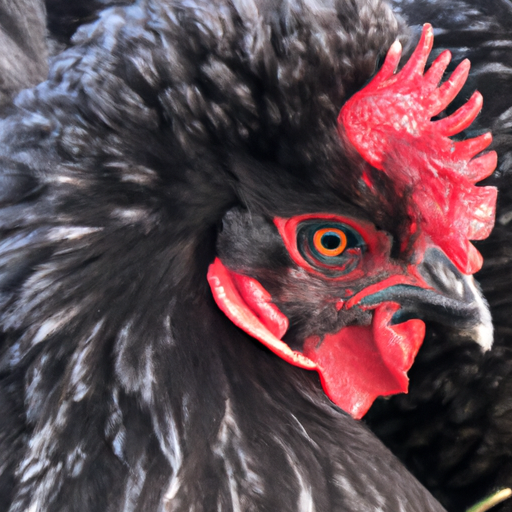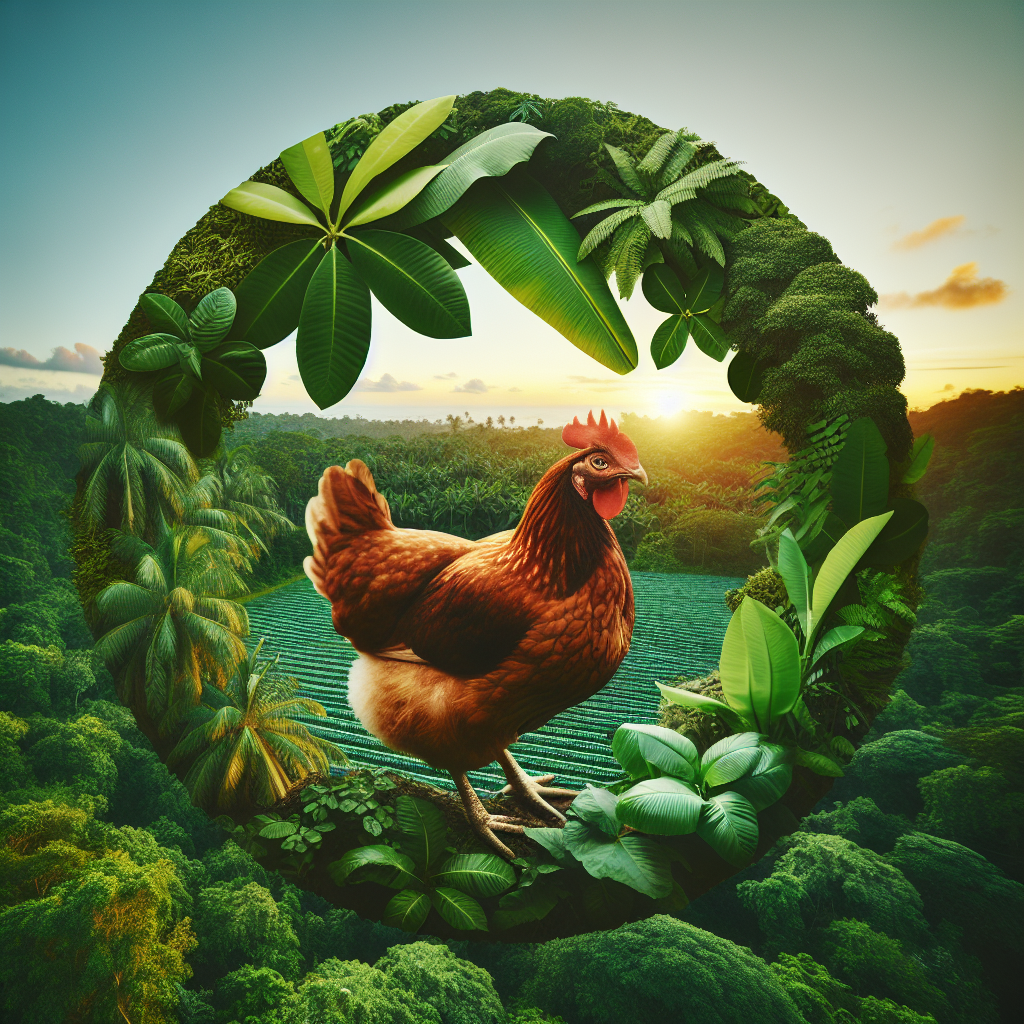Are you a chicken enthusiast living in a colder climate? If so, you’ve likely wondered which chicken breeds would thrive best in your wintry surroundings. Well, look no further! This article is here to provide you with all the information you need to make an informed decision. Discover the top chicken breeds that are well-suited for colder climates and learn why they can withstand the chilly temperatures. From fluffy feathered friends to cold-hardy egg layers, you’ll find everything you need to know to keep your flock happy and healthy during those long, frosty winters.
Choosing the Right Chicken Breeds for Colder Climates
When it comes to raising chickens in colder climates, it’s essential to choose breeds that can withstand the harsh temperatures and still thrive. In this comprehensive guide, we will explore various factors to consider when selecting the right chicken breeds for colder climates. From analyzing feathers and down to assessing comb and wattles size, we will cover all the essential aspects to help you make an informed decision.
Considering Adaptability to Cold Weather
Adaptability to cold weather is a crucial factor to consider when selecting chicken breeds for colder climates. Some breeds have naturally evolved to withstand lower temperatures, while others may struggle in such conditions. Understanding the adaptability of each breed will help ensure the overall well-being and survival of your flock during winter.
Analyzing Feathers and Down
The type and quality of feathers and down play a significant role in determining a chicken’s ability to withstand cold weather. Breeds with thicker feathers and down tend to have better insulation, which helps them retain body heat during colder months. Cochin, Silkie, and feather-legged breeds are known for their ample and dense plumage, making them excellent choices for colder climates.
Assessing Comb and Wattles Size
The size of a chicken’s comb and wattles can also impact their ability to tolerate cold weather. Large combs and wattles have a higher risk of freezing, which can lead to frostbite and other health issues. On the other hand, smaller combs and wattles are less prone to freezing, making them more suitable for colder climates. Wyandotte, New Hampshire, and Plymouth Rock are breeds known for their smaller comb and wattles, making them a good choice for cold weather.
Evaluating Body Size and Weight
Body size and weight of a chicken can impact their ability to generate and retain body heat. Larger breeds tend to have a higher body mass, which enables them to produce more heat to keep warm. If you live in an extremely cold climate, considering breeds with larger body size and weight, such as Jersey Giant, Faverolle, and Langshan, can be beneficial for your flock’s well-being during winter.
Examining Cold-Hardy Breeds
Cold-hardy breeds are specifically bred to withstand excessively cold temperatures and harsh weather conditions. These breeds possess a combination of characteristics, including adaptability, feather quality, comb and wattle size, and body size, that allow them to thrive even in extreme cold. Russian Orloff, Chantecler, and Buckeye are among the cold-hardy breeds that are well-suited for extremely cold climates.
Breeds with Excellent Adaptability to Cold Weather
The Ameraucana is a breed originally developed in the United States and is known for its exceptional adaptability to cold climates. They have thick plumage and small combs, making them less susceptible to frostbite. Additionally, their hardiness and ability to tolerate cold, along with their lovely blue eggs, make them a favorite among backyard chicken enthusiasts.
Brahma chickens, originating from Asia, are renowned for their adaptability to cold weather. They have ample feathers, feathered legs, and fluffy down, providing excellent insulation. Brahmas are gentle and docile birds that can endure cold temperatures, making them a popular choice for cold climates.
Orpingtons are another breed that can handle colder climates with ease. They have a thick, soft down layer beneath their feathers, which helps them stay warm during chilly winters. Orpingtons come in various colors, are excellent layers, and have a friendly and docile temperament.
Sussex chickens are hardy and adaptable, making them suitable for colder climates. They have dense feathers and small combs that reduce the risk of frostbite. Sussex chickens also lay a good number of large, brown eggs, making them a practical choice for those looking for both cold resistance and productivity.
Breeds with Thicker Feathers and Down
Cochin chickens are known for their voluminous feathering, making them ideal for colder climates. Their dense plumage, along with abundant down, provides excellent insulation during winter months. Cochin chickens come in various colors and feather patterns, and their calm temperament makes them a delightful addition to any flock.
Silkie chickens have a unique appearance, with their fluffy feathers resembling soft fur. This breed is well-suited for cold climates due to their dense plumage, which helps them retain body heat. Silkie chickens are also known for their gentle and docile nature, making them a popular choice amongst chicken keepers.
Feather-legged breeds, such as the Brahma and Cochin mentioned earlier, are excellent choices for colder climates. The abundance of feathers on their legs provides additional warmth and insulation, making them even more resistant to cold weather conditions. These breeds not only handle the cold well but also add a touch of uniqueness and charm to any backyard flock.
Breeds with Small Comb and Wattles
Wyandotte chickens are known for their small rose combs, making them well-suited for colder climates. This breed comes in various color varieties and has a calm and friendly temperament. With their smaller combs, Wyandottes are less prone to frostbite, ensuring their well-being during cold winter months.
New Hampshire chickens are highly adaptable and have a small, well-shaped comb, which reduces the risk of frostbite. They are robust birds that can handle the cold well and are known for their excellent egg-laying abilities. New Hampshires are also known for their friendly and docile nature, making them a popular choice among chicken enthusiasts.
Plymouth Rock chickens, with their small single combs, are well-suited for colder climates. They have a good resistance to cold weather and are known for their productivity and excellent meat qualities. Plymouth Rocks come in various colors, and their calm and friendly nature make them great additions to any flock.
Breeds with Larger Body Size and Weight
Jersey Giant chickens, as the name suggests, are known for their impressive size and weight. This breed’s large body mass allows them to produce more body heat, making them well-suited for colder climates. They also have small combs, reducing the risk of frostbite. Jersey Giants are docile and gentle birds, making them a fantastic addition to any backyard flock.
Faverolle chickens are a French breed known for their large size and fluffy plumage. Their abundant feathers provide insulation, allowing them to thrive in colder climates. Faverolles have small combs and wattles, reducing the chances of frostbite. With their friendly and docile nature, Faverolles are favored by many chicken enthusiasts.
Langshan chickens are another breed with a larger body size, making them excellent for colder climates. They have ample plumage and are known for their good egg production. Langshans have small, upright combs, minimizing the risk of frostbite. Their calm and gentle temperament also makes them a popular choice among chicken keepers.
Cold-Hardy Breeds for Extreme Cold Weather
For those living in regions with extremely cold weather, there are specific breeds that are exceptionally well-suited for such conditions. These breeds possess a remarkable ability to withstand extremely low temperatures and continue thriving despite the harsh environment.
Russian Orloff chickens are a rare breed that originates from Russia. They were specifically bred to endure the extreme cold of the Russian winters. Russian Orloffs have a thick plumage, small combs, and wattles, and a robust constitution, making them highly resilient to frigid temperatures.
Chantecler chickens were developed in Canada specifically for cold climates. They have a small rose comb and small wattles, which minimize the risk of frostbite. Chanteclers are also known for their cold-hardiness, making them an excellent choice for those looking to keep chickens in the harshest winter conditions.
Buckeye chickens are another breed robust enough to handle extreme cold. They originated in Ohio and possess a small pea comb and small wattles, ensuring their resistance to frostbite. Buckeyes have a friendly and inquisitive nature, making them fun and engaging companions in your flock.
Common Challenges of Raising Chickens in Cold Climates
Raising chickens in cold climates can present several challenges that require careful attention and management. Understanding and addressing these challenges will help ensure the well-being and survival of your flock during the winter months.
Managing frostbite is crucial when raising chickens in cold climates. Extreme cold can lead to frostbite on a chicken’s comb, wattles, and exposed skin. To prevent frostbite, consider applying petroleum jelly or other protective salves on your chickens’ combs and wattles. Providing adequate shelter, such as a draft-free coop, is also essential to keep chickens warm and protected from the elements.
Another challenge in cold climates is adjusting feeding and watering practices. Chickens require additional energy to keep warm during winter, so ensure they have access to a balanced diet that meets their nutritional needs. Consider providing extra protein and adding warm water to their drinking supply to help them stay hydrated and maintain body temperature.
Ensuring Ventilation
While it may seem counterintuitive, ensuring proper ventilation inside the coop is vital for the health and well-being of chickens in cold climates. Moisture buildup from chicken’s respiration can lead to respiratory issues and increased chances of frostbite. Proper ventilation allows fresh air to circulate while removing excess moisture, maintaining a healthy environment for your flock.
Keeping Water from Freezing
Freezing water can be a significant challenge in cold climates, as chickens require access to water throughout the day. Invest in heated waterers or consider using insulating materials to prevent water from freezing. Regularly check your chickens’ water supply and replace it if frozen to ensure they stay hydrated and healthy.
Taking Care of Chickens in Cold Weather
To ensure your chickens thrive in cold weather, taking additional measures to provide comfort and protection is essential. By following a few essential steps, you can ensure the well-being of your flock during the freezing winter months.
Insulating the Coop
Insulating the coop is crucial to keep your chickens warm during cold weather. This can be achieved by adding insulation materials, such as straw or foam insulation panels, to the walls and ceiling. Ensure the coop’s windows and vents are properly sealed to prevent drafts while maintaining adequate ventilation.
Supplementing Heat Sources
Supplemental heat sources can aid in keeping your chickens warm and comfortable in extremely cold temperatures. This can include the use of heat lamps, heated perches, or even heated pads specifically designed for poultry. Ensure the heat source is safe, properly secured, and away from any flammable materials.
Ensuring Ventilation
As mentioned earlier, proper ventilation is key to maintaining a healthy environment for your flock, even in cold weather. Implementing ventilation measures, such as adjustable vents or windows with mesh coverings, helps regulate temperature and prevent moisture buildup.
Keeping Water from Freezing
Preventing water from freezing is crucial for your chickens’ hydration. Consider using heated waterers or placing water containers on heated surfaces. Insulating the water container with materials like foam or hay can also help prevent freezing.
Conclusion
When it comes to raising chickens in colder climates, choosing the right breeds is essential for their well-being and survival. Considering factors such as adaptability, feather quality, comb and wattle size, and body size will help you make an informed decision. Additionally, understanding and addressing the common challenges of raising chickens in cold climates, along with implementing proper care practices, will ensure your flock remains healthy and happy throughout the winter months. With the right breed selection and proper care, you can enjoy the pleasures of raising chickens in even the coldest of climates.




